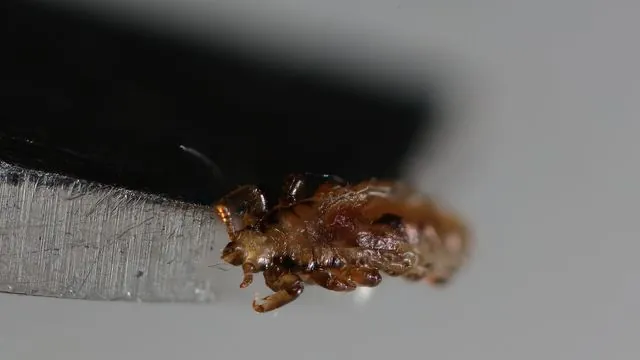
Unearthing the Secrets of a Deadly Bacterium: How Ancient DNA Reveals the Evolution of 'Sweating Fever'
2025-05-23
Author: Wei
In the shadows of history, infectious diseases have shaped the fate of populations, yet their origins remain shrouded in mystery. One such culprit is Borrelia recurrentis (B. recurrentis), the bacteria responsible for louse-borne relapsing fever (LBRF), a disease linked to some of the deadliest outbreaks.
The Dark Legacy of B. recurrentis
Throughout the centuries, B. recurrentis has been associated with calamities like the infamous 6th-century 'Yellow Plague', various 19th-century epidemics across the UK, and even two significant pandemics in Africa during the 20th century. Today's outbreaks of LBRF are often seen in overcrowded areas plagued by inadequate sanitation.
From Ticks to Lice: A Complex Evolution
Remarkably, B. recurrentis is one of only three bacteria known to have transitioned from tick to louse transmission. However, piecing together this evolutionary puzzle has been a daunting task, primarily due to limited access to modern genomes and the neglect surrounding LBRF.
Enter ancient DNA analysis—an innovative approach allowing scientists to scrutinize genomes from centuries-old samples. A dedicated team from the Ancient Genomics Laboratory at The Francis Crick Institute, led by Dr. Pooja Swali, set out to probe the past for clues.
Digging Into History: The Research Breakthrough
The researchers screened over a thousand ancient DNA samples from various archaeological sites throughout Britain, uncovering evidence of B. recurrentis in four individuals. These individuals hailed from sites such as an Iron Age cemetery in East Yorkshire and a medieval chapel in Poulton, among others.
The revelation was published in the journal **Science**, marking a significant leap in understanding the origins of B. recurrentis and its intricate history.
Innovating with Technology: The Key to Discovery
Dr. Swali explained the technological marvels that enabled their discoveries, such as shotgun whole-genome sequencing and advanced metagenomic approaches. These techniques make it possible to rapidly analyze ancient samples, distilling the important from the insignificant.
Revealing the Deadly Pathogen's Evolution
The study illuminates B. recurrentis as not just a neglected bacteria but a highly lethal one, linking its rise to human behaviors over the past 5,000 years. The transition from tick-borne to louse-borne transmission resulted in increased virulence and a marked reduction in its genome.
Remarkably, this evolution appears to have begun around 5,000 years ago, coinciding with the wool trade that favored louse proliferation—a fact that may have accelerated the spread of this dangerous pathogen.
A Call for Recognition and Further Research
The implications of this study are profound. It highlights the need for increased vigilance towards neglected pathogens like B. recurrentis, which continue to endanger populations today, especially in crowded environments like refugee camps. With only a handful of modern genomes sequenced, this research increases the understanding of its genetic diversity and historical prevalence.
Dr. Swali hopes that as technology advances, further research will unveil more ancient genomes and shed light on the extensive past of this overlooked bacterium. By bridging ancient and modern sciences, she aims to bring to the forefront the health risks posed by pathogens like B. recurrentis that remain unrecognized in global health agendas.




 Brasil (PT)
Brasil (PT)
 Canada (EN)
Canada (EN)
 Chile (ES)
Chile (ES)
 Česko (CS)
Česko (CS)
 대한민국 (KO)
대한민국 (KO)
 España (ES)
España (ES)
 France (FR)
France (FR)
 Hong Kong (EN)
Hong Kong (EN)
 Italia (IT)
Italia (IT)
 日本 (JA)
日本 (JA)
 Magyarország (HU)
Magyarország (HU)
 Norge (NO)
Norge (NO)
 Polska (PL)
Polska (PL)
 Schweiz (DE)
Schweiz (DE)
 Singapore (EN)
Singapore (EN)
 Sverige (SV)
Sverige (SV)
 Suomi (FI)
Suomi (FI)
 Türkiye (TR)
Türkiye (TR)
 الإمارات العربية المتحدة (AR)
الإمارات العربية المتحدة (AR)